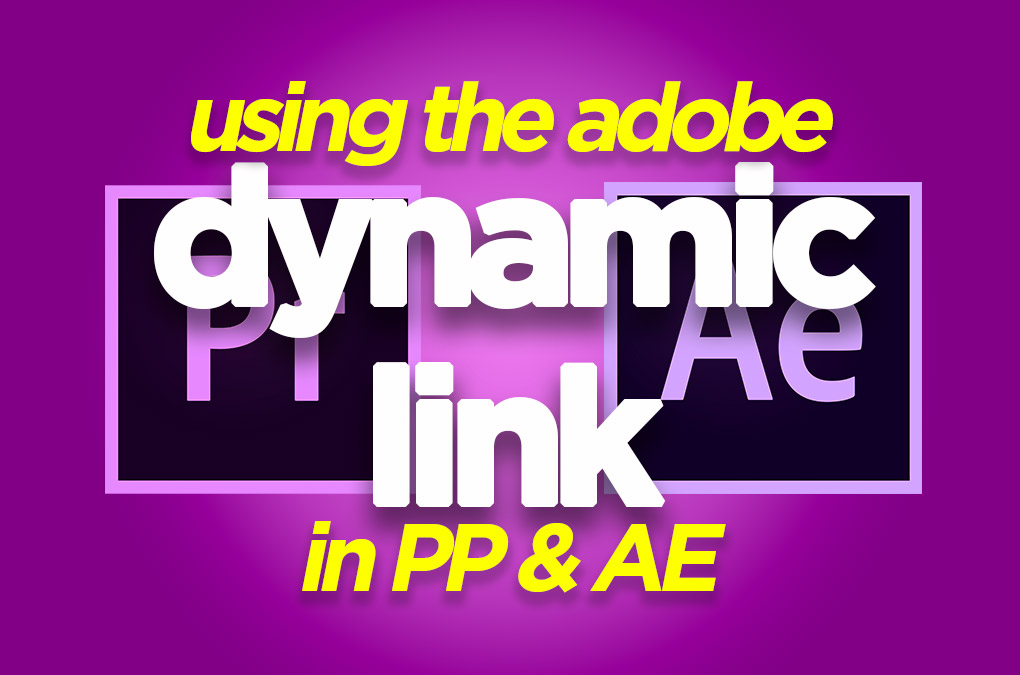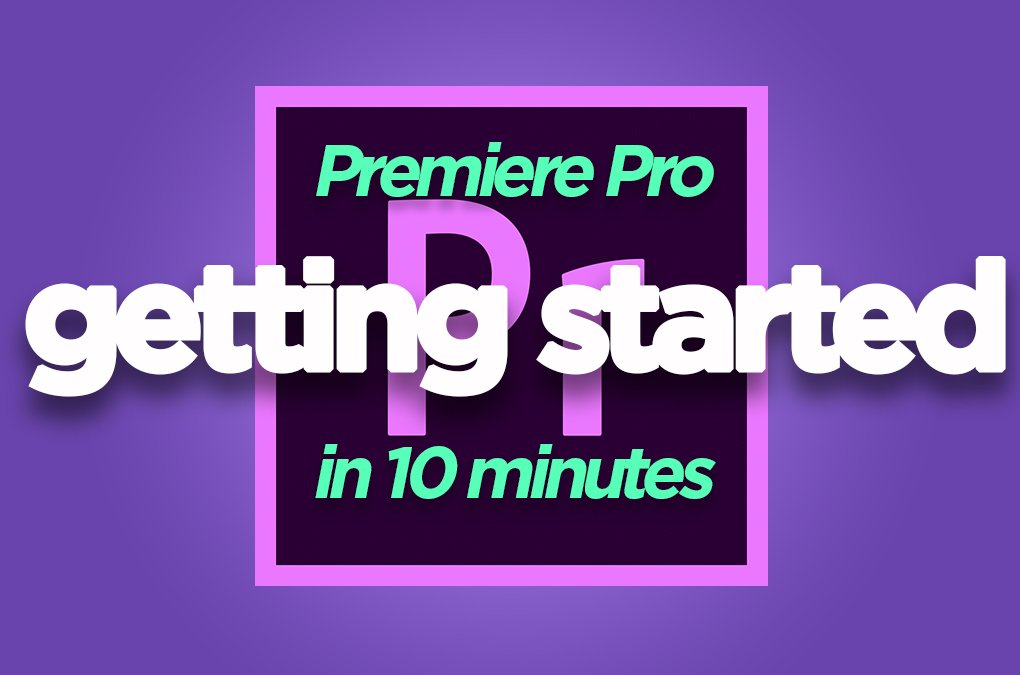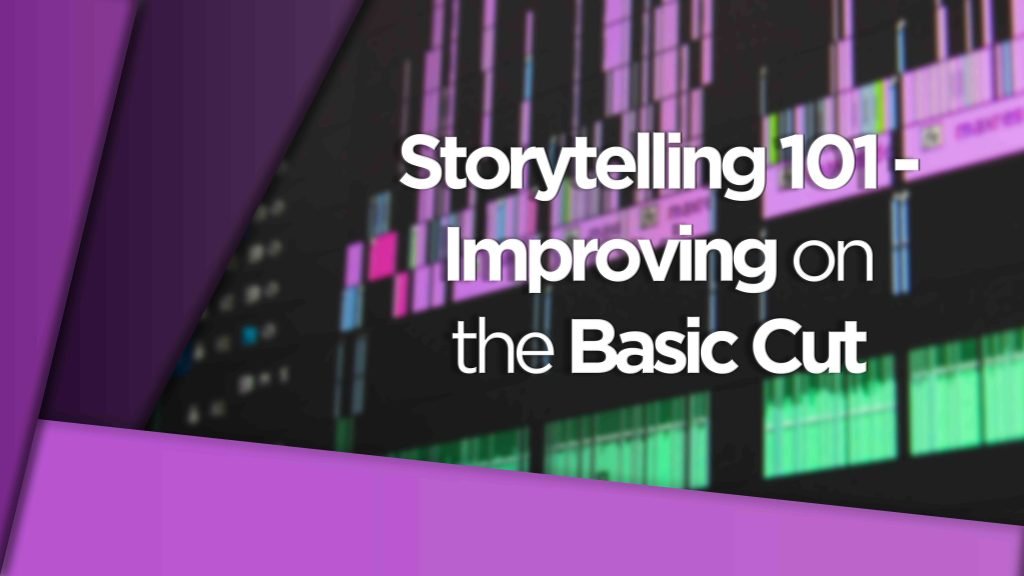The Adobe Dynamic Link is about to become your new favorite feature of both Premiere Pro and After Effects, if you’ve never come across it before.
Both of these programs do very specific functions that have some degree of flexibility in them to use each other’s features but why create an animated title in Premiere when you could create it in After Effects, where you have far more tools to work with, and have it automatically update in your Premiere Pro timeline?
Well, that’s exactly the type of scenario that the Adobe Dynamic Link is made for!
DigiProTips is all about working smarter, not harder and by utilizing the Dynamic Link in your workflow you’ll be able to just that. Freeing up time for you to be more creative.
Let’s take a look at what it is, how it works, how you can implement it in your post-production workflows and some bonus pro tips too.
How do I know what I’m talking about? Head to the DigiProTips Experience and Background page to find out how I’ve built up my knowledge over a career spanning feature film, broadcast TV and digital content production.
The Quick Answer to Using the Adobe Dynamic Link
You can set up the Dynamic Link from either Premiere Pro or After Effects.
Option 01 In Premiere Pro:
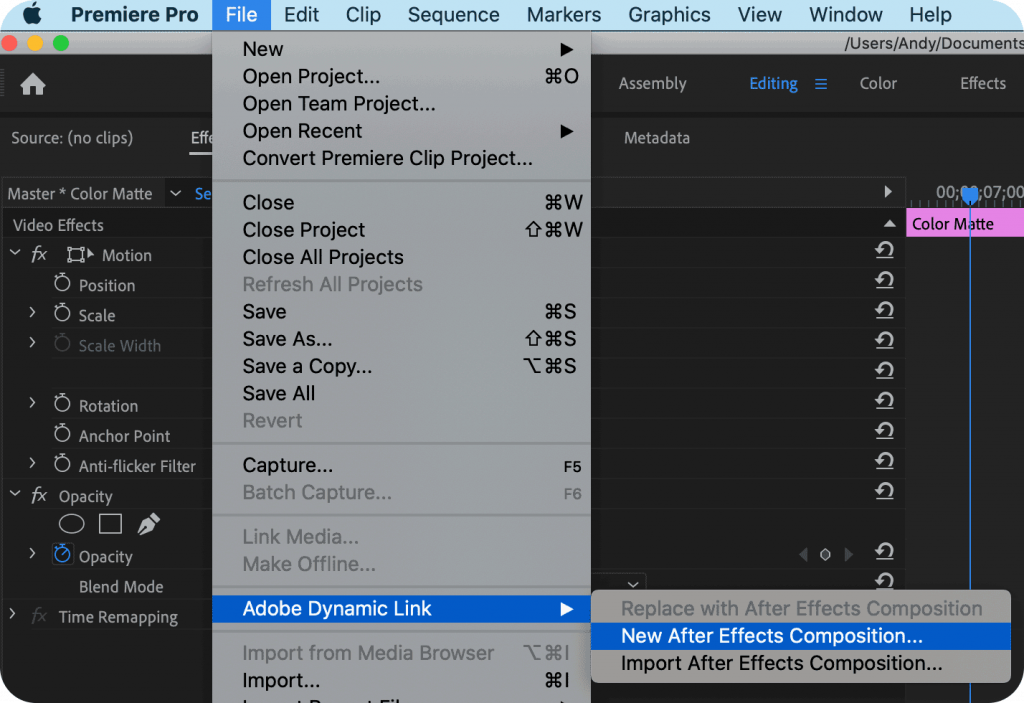
Step 01 – Go to File -> Adobe Dynamic Link -> New After Effects Composition OR right-click a clip/selection of clips in your timeline and choose ‘Replace With After Effects Composition’.
Step 02 – This will open up After Effects (if you don’t have it open already) and ask you to name and save a new project. If you have a project open already then the new composition will be created in this project.
Step 03 – Start working on your composition in After Effects and any changes will be instantly updated in your Premiere Pro timeline.
Option 02 In Premiere Pro:
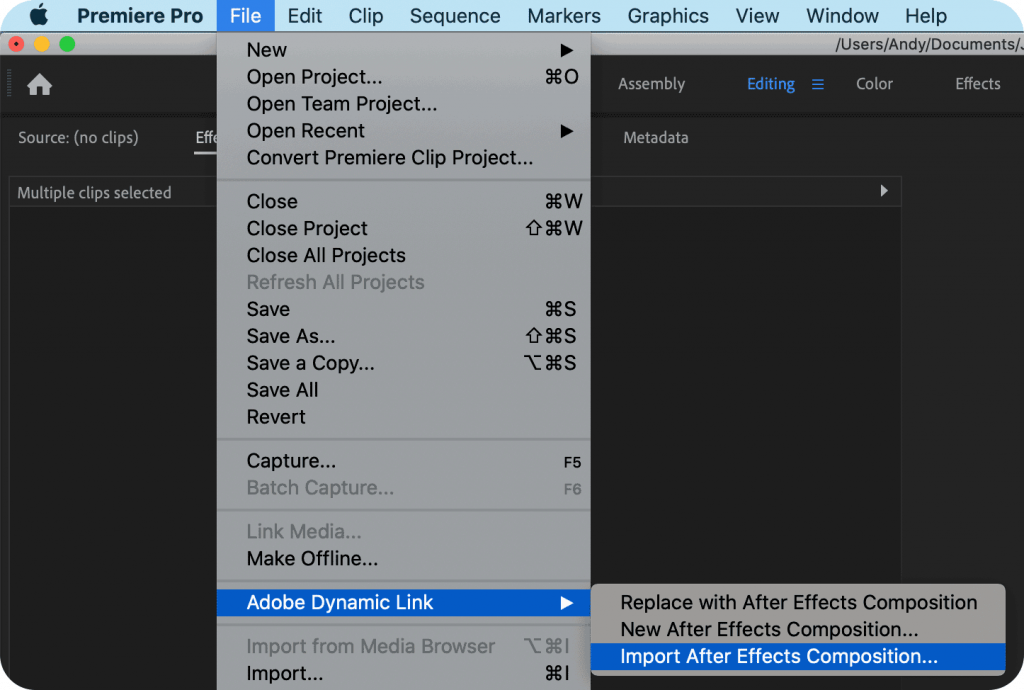
Step 01 – Go to File -> Adobe Dynamic Link -> Import After Effects Composition
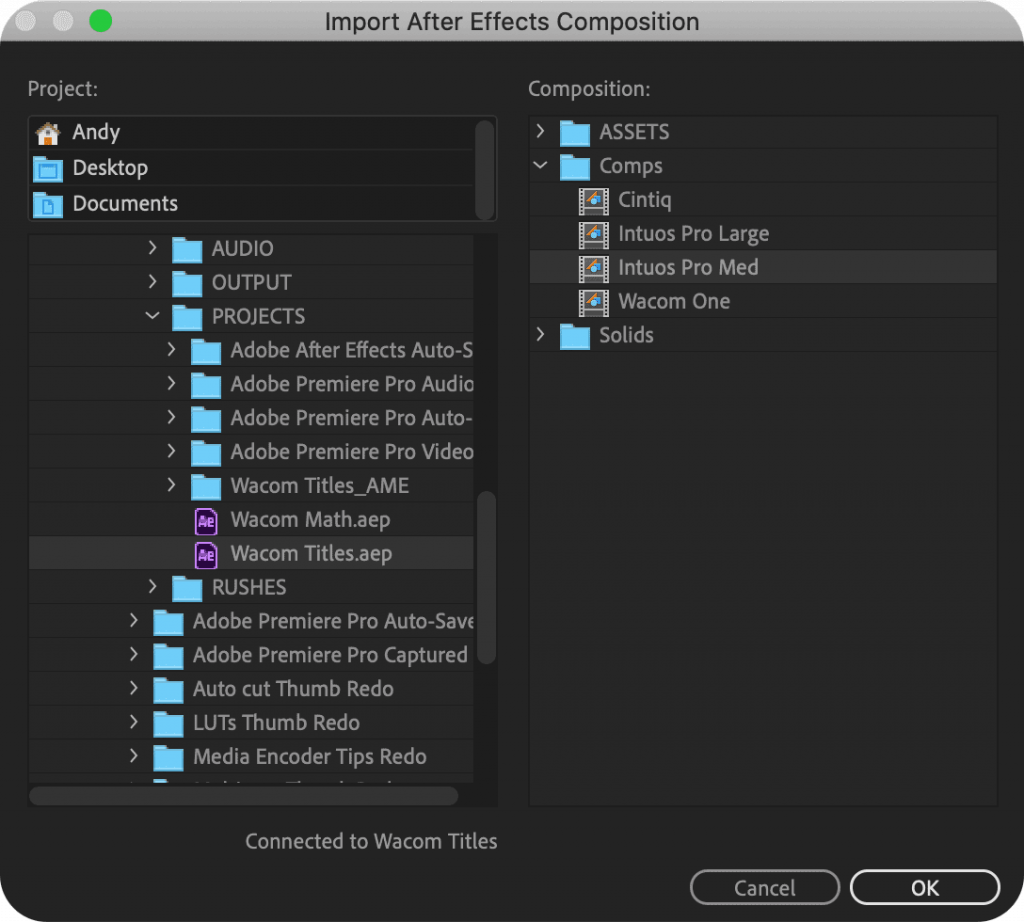
Step 02 – Use the dialog box that opens to navigate to the folder the project is saved in and then choose the comp you want to import.
Step 02 – This will import an already existing After Effects Composition with a .aep file extension and the little link symbol in your project bin. You can now bring this comp in to use on your timeline.
Option 01 in After Effects:
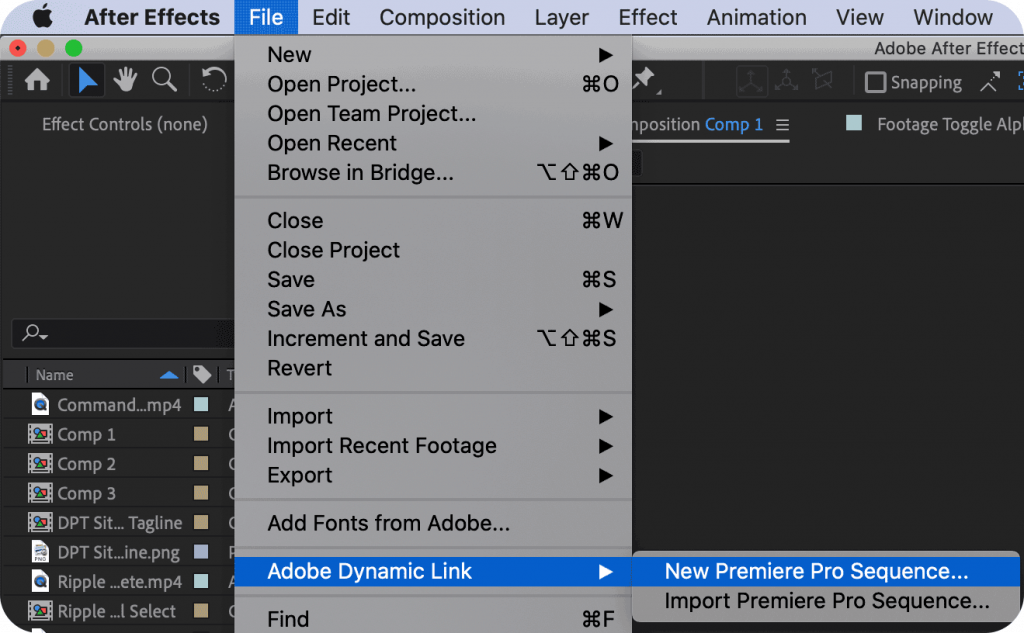
Step 01 – Go to File -> Adobe Dynamic Link -> New Premiere Pro Sequence
Step 02 – This will open Premiere Pro to name and start a new sequence. If you don’t have a project open it will also ask you to create a new one.
Option 02 in After Effects:
Step 01 – Go to File -> Adobe Dynamic Link -> Import Premiere Pro Sequence
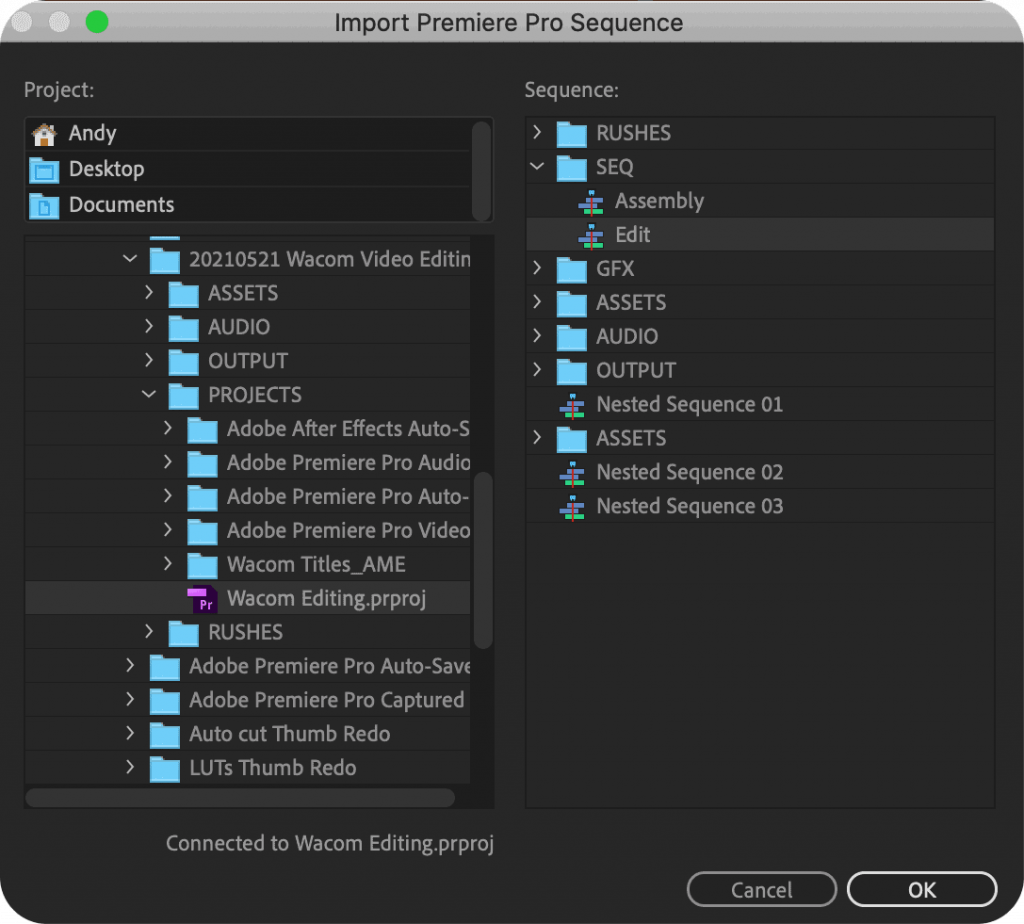
Step 02 – Use the dialog box that opens to navigate to the folder the project is saved in and then choose the project you want to import.
Step03 – This will create a dynamically inked .proj file in your After Effects bin for you to bring into your compositions.
What is the Adobe Dynamic Link
The Adobe Dynamic Link is a digital bridge between Premiere Pro and After Effects that allows sequences and compositions to be shared between the two programs.
You see, before Adobe brought out the Dynamic Link there was no way of integrating After Effects Compositions into Premiere Pro and vice versa.
If you wanted to use an animated graphic made in After Effects inside your edit in Premiere Pro then you had to export the graphic first and then import it to use it in your edit.
Any subsequent tweaks you wanted to make to that graphic would then also need to be exported and imported first.
This not only takes much longer to do it but it also clogs up your precious disk space with unwanted older versions of exports.
To speed up this process and make working between the two softwares that much more fluid, Adobe introduced the Dynamic Link feature.
Now, any Premiere Pro project can be imported into After Effects or an After Effects composition imported into Premiere Pro and any changes made in their parent software will be automatically updated in the latter, when you switch back to that software.
How the Adobe Dynamic Link Works
The Dynamic Link works by creating a bridge from one software to the other.
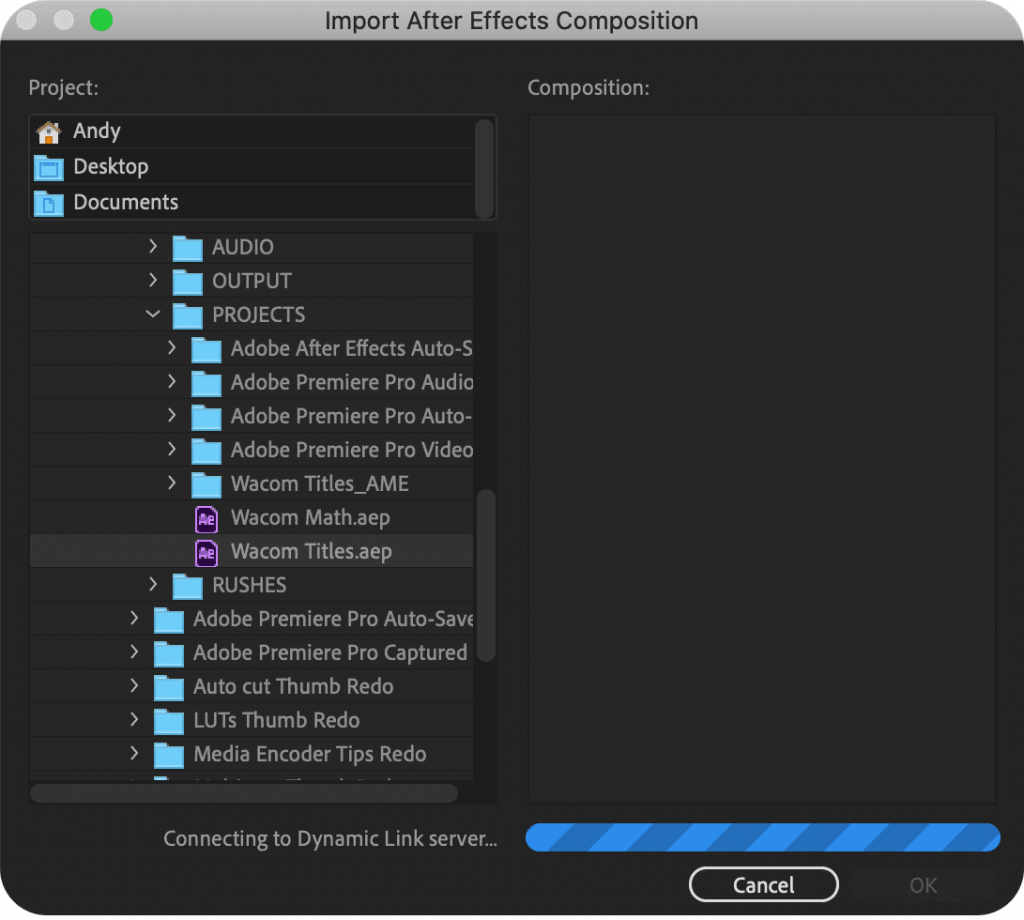
Each software has the ability to act as the Dynamic Link server and as the client. When you start the connection you’ll see a status bar at the bottom that has ‘connecting to dynamic link server’ next to it. This means one piece of software is trying to connect to the server of the other and establish a bridge.
Once that link/bridge is connected then information can be shared between both programs.
The link works continually in the background so that when you switch between the two programs it will automatically look for any changes/updates to the linked comp/sequence and pull that information across.
Implementing the Dynamic Link Into Your Woårkflows – Pro Tips
To start using the Adobe Dynamic Link you simply need to follow the Quick Answer section above.
There’s a few things you should know about using the Dynamic Link that will help you when you’re editing.
Computing Power
The Dynamic Link uses a fair whack of computing resources to work. This is especially true when integrating an After Effects composition into a Premiere Pro timeline.
After Effects previews compositions by rendering the frames into RAM and playing it back from there. Premiere Pro on the other hand tries, for the most part, to play directly from the source using CPU power. You will therefore have a hard time playing back your After Effects clip in real-time within your Premiere Pro timeline.
This is because you are asking your PC to access a composition in another software and interpret the information in all of its layers on CPU power alone. You are more than likely going to see a red playback status bar above Dynamic Linked compositions in your timeline.
You will have a much better and faster editing experience if you leave the Dynamic Link sections until towards the end of your edit and then pre-render those parts of your timeline before previewing it.
For more on Premiere Pro rendering check out my article on it here:
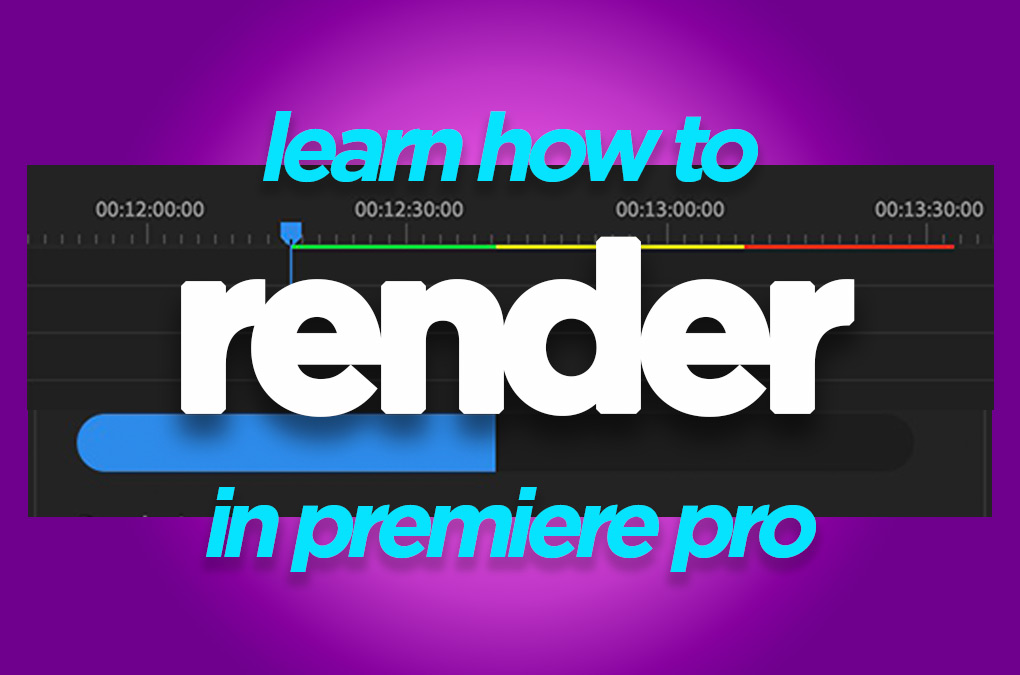
If you have a lot of computing power then this may not be so much of an issue for you but for the majority out there, this will be the only snag to working with the Dynamic Link.
Organisation
It’s very easy to start adding dynamically linked After Effects compositions to your edits and for your projects to start becoming messy.
When you have linked projects it’s important to keep your project bins neat and tidy so that you know where information is stored within your project and which compositions/sequences are using which media.
Keeping your project files next to each other is also a good idea.
Create Essential Graphics Rather Than Dynamic Linked Compositions
Adobe introduced Essential Graphics into Premiere Pro a couple of years ago and it changed the ease with which you can work with common compositions in your timeline.
Use this to your advantage and save commonly used titles, overlays and effects as Essential Graphics files that you can import into Premiere Pro.
They will work much faster than a linked composition and they should have the ability to have fields that you can change right within Premiere Pro, such as text, sizing and color.
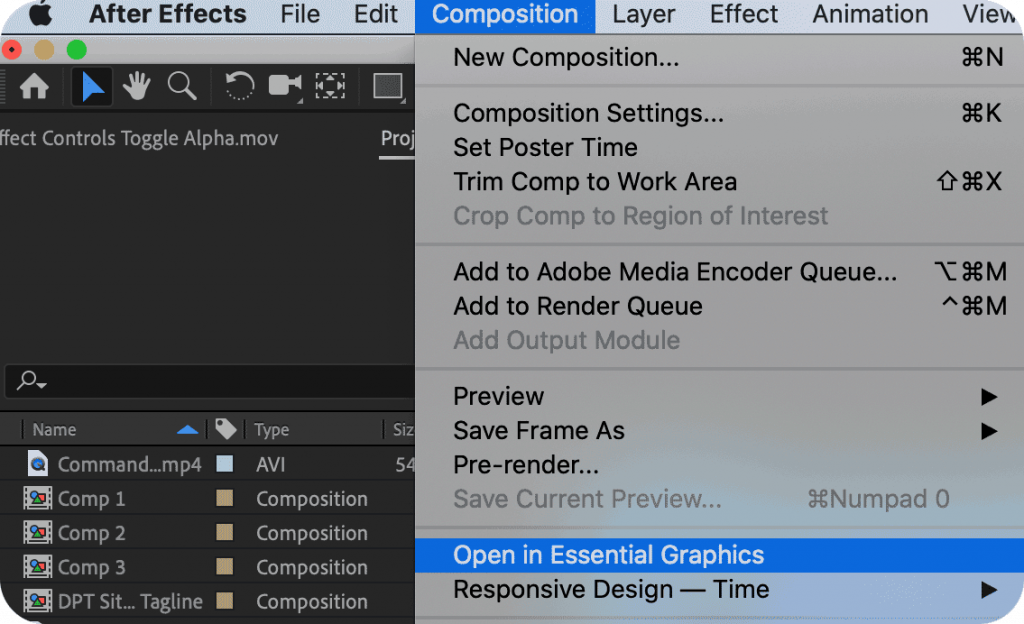
To do this, simply go to “Composition -> Open in Essential Graphics’ from the After Effects menu. Choose the properties you want to be able to manipulate in Premiere Pro then hit ‘Export Essential Graphics Template’.
Now you just need to import that into the Essential Graphics panel in Premiere Pro.
Happy Linking!
Now that you have the knowledge and the tools it’s just a matter of practice.
The Adobe Dynamic Link is a great tool for saving time and being more efficient between software but get to know it, how it works, and its limitations so that you can judge the best uses for it in your workflows.
If you’ve found this tutorial useful then please do let me know in the comments and also if there’s anything you’d like me to write about next.
For more After Effects tutorials then why not check out how to add a bounce effect with just an expression:

Or for Premiere Pro tutorials then check out how to perfect speed ramping:
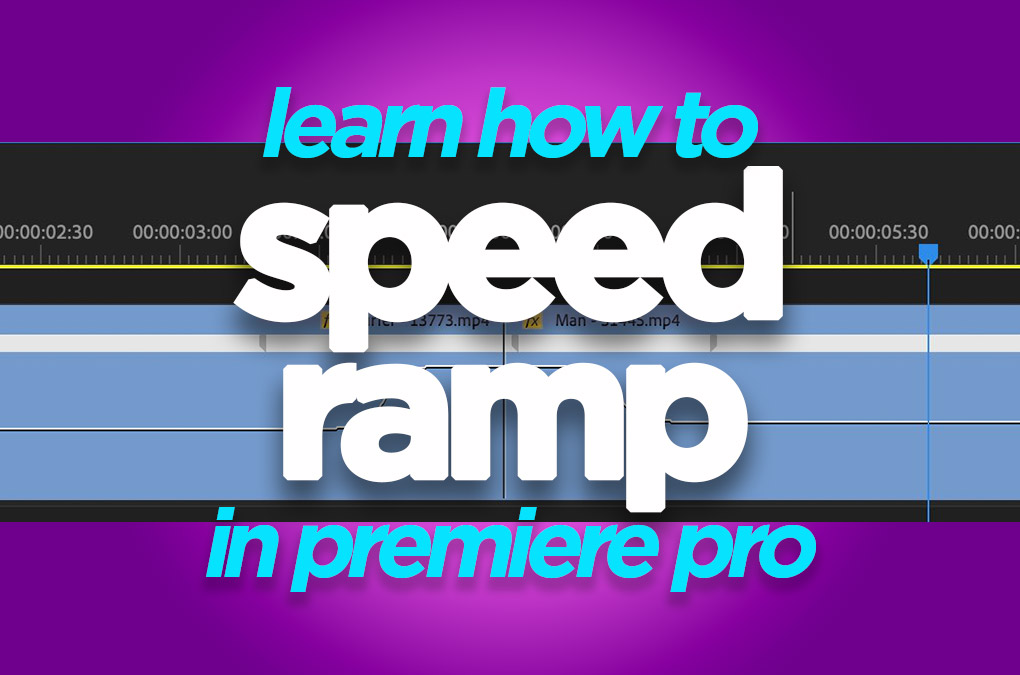
DigiProTips

